With so many kinds of content available in our modern media ecosystem, it can be hard to compete for consumers’ attention–especially as many people are now second screening and are used to engaging in other activities that distract them from video and video ads.
Audio can be a great way to break through the noise (pun intended). Podcasts have become more popular in recent years: people increasingly turn to their favorite audio shows for news and authentic perspectives on current events.
That makes podcasts a great opportunity for marketers looking to connect with customers. We’re breaking down how podcast ads work, who they can reach, and how brands can successfully leverage audio to reach their target audiences.
Why podcasts are a great way to reach consumers
Today’s listeners are spending more time than ever with podcasts. In 2014, only 2% of the daily time spent listening to all audio by those aged thirteen and over was spent with podcasts. By 2024, that number had more than quadrupled: podcasts now account for 11% of daily time spent with audio.
Podcast audiences are also diverse and increasingly female. 48% of Black Americans and 43% of Latino Americans are monthly podcast listeners, while the number of US women listening to podcasts has hit a new high with 45% listening monthly and 32% weekly.
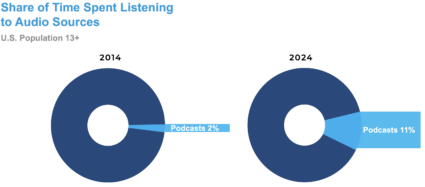
Source: Edison Research
This is partly because people are now less likely to turn to old-school media like newspapers and the evening news for information on current events. In October 2023, the Washington Post noted that podcasts’ audience sizes were surpassing legacy media.
That change showed up in the 2020 election with a striking decline in ratings for major news networks. The first Trump presidency temporarily boosted legacy media viewership, but since 2021, podcast audiences have remained steady or increased while networks like CNN, Fox News, and MSNBC saw a drop in viewership.
Podcasters are increasingly important figures in the political media landscape. If the trend continues and legacy media fails to regain its influence, podcasters might just be the future of political news and interviews.
We already saw this influence play out in the 2024 election, where both campaigns zeroed in on tiny slivers of the electorate that remain undecided, calculating that the media megaphones of yesteryear—like network news and print newspapers—were mostly reaching voters who already knew who they would vote for. Instead of focusing on old school press, both candidates chose to appear on podcasts as major media appearances.
Audience numbers seem to bear this out. For example, the Joe Rogan Experience podcast reaches around 15 million weekly viewers. By comparison, a CNN town hall featuring Harris drew 3.2 million viewers, with over 700,000 of them falling within the 25- to 54-year-old demographic
What makes podcast ads so effective?
Beyond their growing audience, podcasts are a unique medium that offers advertisers opportunities to reach consumers in new ways.
Audio can command attention differently than other media. Since it’s a high-intent environment, and because it can be hard to pause or fast-forward audio while walking, driving, or doing other tasks while listening, 24% of podcast listeners never, or rarely, skip the ads, outpacing TV ads.
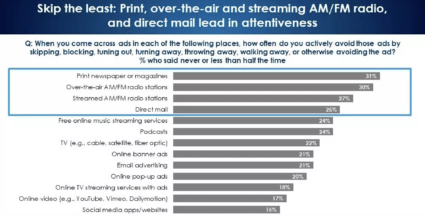
Source: Westwood One
There are also opportunities to tie into podcasts on other mediums. More and more podcasts are leveraging video, and consumers are buying in; average daily streams of video podcasts have increased by 39% globally.
Ads on podcasts have also proved to be effective at converting listeners. 46% of weekly podcast listeners have purchased a product or service because they heard an ad on a podcast.
That impact might be due to the more intimate setting: podcast audiences might feel they have deeper insight into the host’s ideas and life that feels authentic, raw, and trustworthy compared with other media channels. Listeners are invested in their favorite podcasters, so they actually function similarly to influencers: audiences trust their judgment.
Creating a successful podcast ad
Not all audio ads are created equal. One of the biggest opportunities in podcast advertising leans into the charisma of the podcasters themselves through host-read ads. These ads can produce a halo effect, helping brands tap into built-in audiences who already know and trust the voices they hear on a regular basis.
Host-read ads, especially when the hosts bring their own personality and unique spin to the content, can help make your product seem more personal and compelling; 55% of podcasting ad revenue comes from host-read ads. Announcer-read and pre-produced ads make up an additional 40% of revenue, while brand and agency-produced ads make up just 3% of all podcast advertising revenue.
These ads fit seamlessly into the show, keeping listeners tuned in and engaged, which makes them more effective than a traditional audio spot. For example, Better Help’s host–read ads often feel like genuine recommendations from the podcaster. Given the nature of their service, the conversational style aligns perfectly with the podcast format.
Mental health service Cerebral also leverages ads read by hosts across a range of podcasts, emphasizing testimonials from hosts to build credibility and trust among their audiences. These ads resulted in a 163% increase in listener consideration for their platform.
Brands can take host integration even further by having podcasters use their products and provide anecdotes about their experience.
Indochino used this strategy effectively by providing the hosts of Pod Save America with suits for a wedding. Squarespace, another frequent podcast advertiser, is often endorsed by hosts on creative and entrepreneurial podcasts with personal stories about building websites or online businesses. This narrative style not only informs but also inspires listeners to consider their own projects, enhancing engagement. It feels like peer-to-peer advice at scale from someone you already trust.
HelloFresh, a juggernaut when it comes to podcast advertising, often has podcasters share their cooking experiences with meal kits and talk about the convenience and quality of the meals. By incorporating humor and personal anecdotes, these ads feel less like traditional commercials and more like friendly recommendations.
For brands looking to really invest in the audio space, there’s also the option of creating your own podcast. This is a much heavier lift in terms of resources and can require outside help to succeed, but, done right, it can be a unique long-term advertising solution that really engages members of your audience.
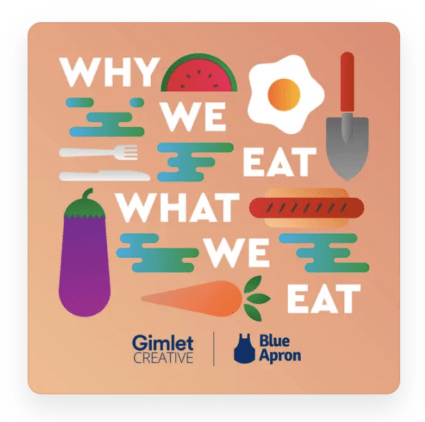
Source: Blue Apron/Gimlet Media
Blue Apron produces its own podcast called “Why We Eat What We Eat,” hosted by food writer and cookbook author Cathy Erwar, which digs into the forces shaping eating habits and food decisions.
By featuring host-read ads that blended seamlessly with the podcast episodes, Blue Apron was able to increase brand awareness of their service authentically and build a deeper connection with listeners.
The podcast gave Blue Apron a platform to connect with its audience, making the brand more than just a meal kit service—it became a source of food-related knowledge and inspiration for its customers.
Whether you’re making your own show or just dipping a toe into ad spots, podcasts are a great way to reach new audiences in a place where they’re really paying attention.
Looking for more media insights? Check out our guide to the future of media convergence to get our experts’ take on what’s coming our way next year.





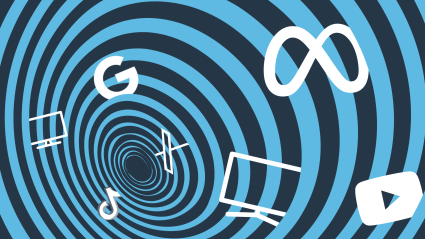
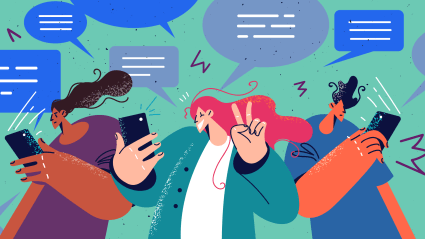
Responses